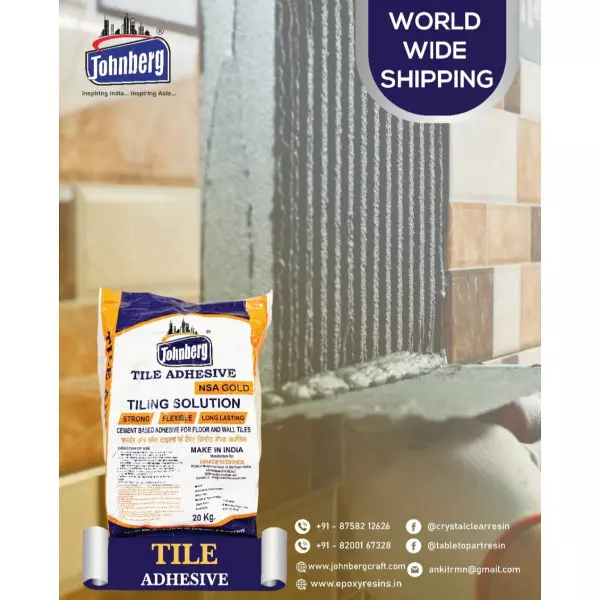- Home
- About Us
- Products
- Resin Furniture
- 3D Epoxy Flooring Service
- Resin Table Top
- Wooden Epoxy Resin Table Top
- Metallic Epoxy Flooring Service
- Conception Chemical Consultants
- Chemical Consultancy For Construction
- Construction Chemical Consultant
- Tile Grout
- Foundation Grout Consultant
- Paver Block Chemical Consultant
- Waterproofing Chemical Consultant
- Epoxy Pigment Consultant
- Heat Reflective Coating
- Water Repellent Coating
- Epoxy Grout
- Chemical Consultant
- Industrial Chemical
- Construction Chemical
- Epoxy Resin
- Epoxy Coating
- Polyester Resin
- Joint Sealants
- Cristal Clear Epoxy Resin And Hardner
- Construction Chemicals
- Polycarboxylate Ether And Liquid
- Solvent Cement
- Tile Protection Sheet
- Water Reducing Superplasticizer
- Epoxy Resin And Hardeners
- Two Component Waterproof Coating
- Epoxy Floor Coatings
- Casting Resin
- Sbr Latex Polymer
- Epoxy Grout Formulations
- Epoxy Resin Tabletops
- Tile Spacers
- Tile Levelling Spacers
- Industrial Night Vision Epoxy Grout
- Sbr Latex
- Johnberg Marble Polishing Liquid
- Acrylic Elastomeric Coating
- Weber Tile Adhesives
- Decorative Arts
- Resinic Crafts
- PU Flexible Tile Adhesive
- Resin Pressed Flowers
- Dry Pressed Flower
- Epoxy Putty
- Resin Furniture
- Services
- Updates
- Gallery
- Contact Us
Tile Grout In West Bengal
Details of Tile Grout
Tile grout is a crucial material used in the installation of tiles. It fills the spaces between tiles to lock them in place, prevent moisture penetration, and provide a finished appearance. Here's a detailed overview:
1. What Is Tile Grout?
Grout is a mixture of cement, sand, and water (in cementitious grout), or resin-based in epoxy types, used to fill the joints between tiles after they are laid.
2. Types of Tile Grout
A. Cementitious Grout
Sanded Grout
Contains fine sand particles.
Used for wider joints (1/8" to 1/2").
More durable and crack-resistant.
Unsanded Grout
Smooth texture, no sand.
Used for narrow joints (less than 1/8").
Ideal for polished tiles or wall installations.
B. Epoxy Grout
Made from epoxy resins and filler powders.
Highly durable, stain-resistant, and waterproof.
Best for areas exposed to moisture, chemicals, or heavy traffic (e.g., kitchens, bathrooms, commercial kitchens).
More expensive and harder to apply than cement-based grouts.
C. Furan Grout
Made from polymers with a resin base similar to epoxy.
Extremely chemical-resistant, used in industrial settings.
Rare in residential use.
3. Components (in Cementitious Grout)
Cement: The binding agent.
Sand: Adds strength (in sanded grout).
Color Pigments: For aesthetic match with tile.
Additives: Sometimes added for flexibility, water resistance, or ease of application.
4. Uses of Tile Grout
Fills tile joints to prevent dirt and debris accumulation.
Adds strength and stability to the tiled surface.
Protects against water seepage, especially in bathrooms, kitchens, and pools.
Enhances aesthetics by offering different colors and finishes.
5. Application Process
Mixing: Prepared to the correct consistency (thicker for walls, more fluid for floors).
Spreading: Applied diagonally with a rubber float.
Wiping: Excess grout is wiped off using a damp sponge.
Curing: Left to dry and harden (24–72 hours depending on type).
Sealing (optional for cement-based): A grout sealer may be applied to prevent staining and moisture absorption.
6. Maintenance
Sealing (for cement grout): Every 1–2 years depending on use.
Cleaning: Mild detergents, vinegar solutions, or specialized grout cleaners.
Repairs: Cracked or discolored grout may need re-grouting or patching.
7. Common Issues
Cracking: From movement or poor mixing/application.
Staining: Especially on unsealed cement grout.
Mold/Mildew: In moist environments without proper sealing or ventilation.
Offered Product
Tile Grout
Usage/ApplicationTile JointPackaging TypePolythene BagFormPowderTypesVitrifiedTypeCement GroutPackaging Size1 Kg & 5 KgMaterialepoxyCategoriesCementitiousCategoryPolymer Modified GroutGradepremiumBrandJohnbergohnberg Brand Epoxy Grout For Tiles Grouting Application. High Strenght, Stain Proof, Easy To Use And Easy Ro Clean Application.... Read moreEpoxy Tile Grout Manufacturers In Bhopal
Being A Client-centric Company, We Are Engaged In Offering A Distinct Collection Of Epoxy Tile Grout. Our Skilled Professional's Manufacture This Tile Grout By Using Well-tested Raw Material And Sophisticated Technology. This Range Is Avail From Us In Different Sizes Packing As Per The Exact Needs Of Clients. Our Range Is Rigorously Tested By Our Quality Controllers Against Diverse Parameters In Order To Deliver A Defect-free Range At Client's End. The Offered Range Is Extensively Appreciat Continue
Tile Grout Manufacturers In Hyderabad
What Is Tile Grout?Grout Is A Dense, Fluid Material Used To Fill The Spaces Between Tiles After They Have Been Installed. It Helps Secure The Tiles In Place, Prevents Moisture From Seeping Beneath The Tiles, And Gives The Surface A Clean, Finished Look.Types Of Tile GroutCement-Based GroutSanded Grout: Contains Fine Sand To Prevent Shrinking. Used For Joints Wider Than 1/8 Inch (3 Mm).Unsanded Grout: Smooth And Used For Narrow Joints (less Than 1/8 Inch).Modified Cement Grout: Contai Continue
Tile Grout Service In Andhra Pradesh
Tile Grout Is A Construction Material Used To Fill The Spaces Between Tiles After They've Been Installed. It Not Only Improves The Overall Appearance Of A Tiled Surface But Also Helps Stabilize The Tiles And Prevent Moisture From Getting Underneath Them. Here's A Detailed Breakdown:1. Types Of Tile GroutA. Cement-Based GroutSanded Grout: Contains Fine Sand; Used For Joints Wider Than 1/8 Inch (3 Mm).Stronger, Prevents Cracking And Shrinking.Commonly Used For Floor Tiles.Unsanded Grou Continue




